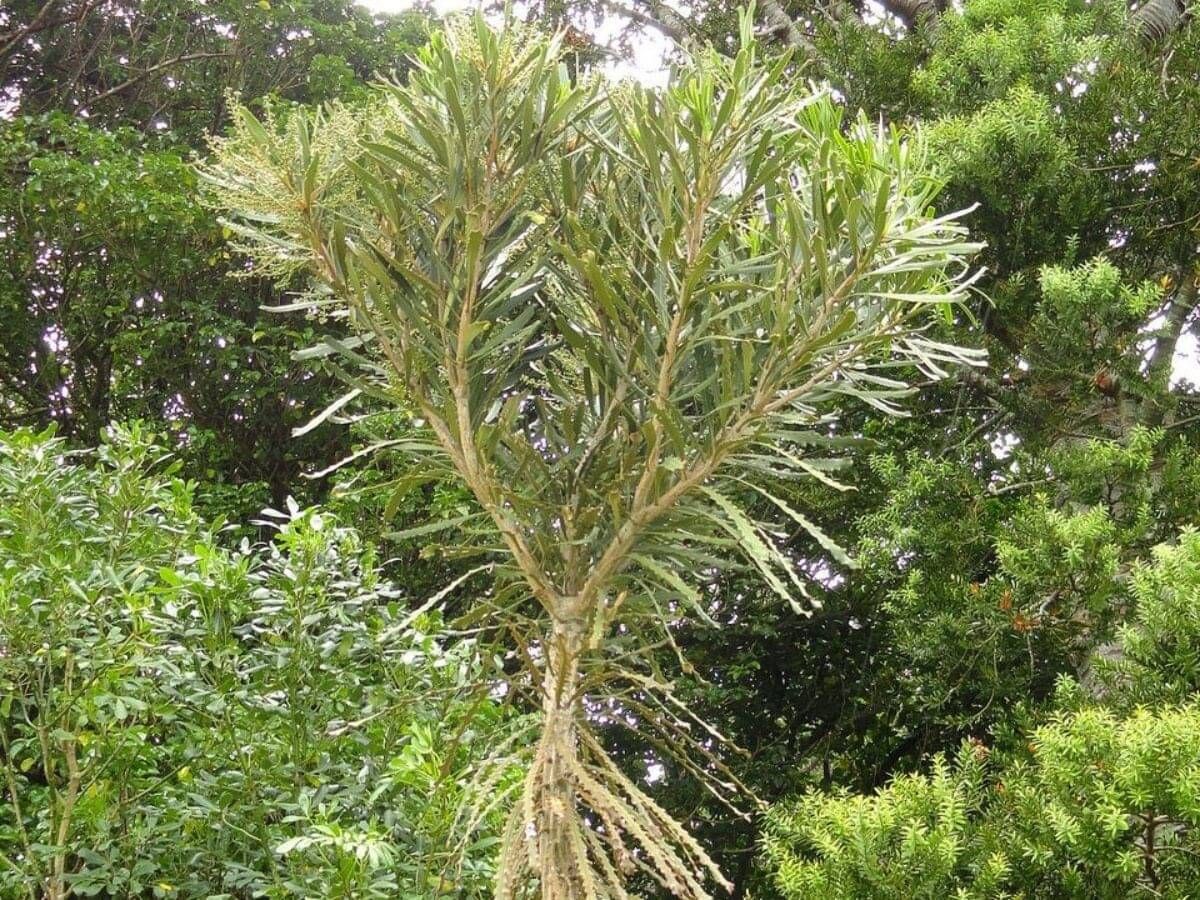Horoeka
Where is it found?
Lancewood is a common plant found throughout lowland and montane forests and shrublands on the North, South and Stewart Islands. The juvenile form is particularly abundant in regenerating bush and along forest edges, especially in lowland areas.

Facts
There are three species of lancewood, all called horoeka by Māori. The rarest is fierce lancewood, so named because of its shark-tooth projections along the leaf margins.
Plants are either male or female. The small, greenish-yellow flowers are pollinated by insects. The purplish-black fruits are an important food source for whitehead, tūī and wood pigeon/ kererū when they occur in autumn and winter. In Māori lore, the flowering of lancewood was an indication that birds would be plentiful the following year, because the fruits take a whole year to ripen.
Lancewood can grow up to 15 metres high, with a trunk 50 centimetres in diameter. It has smooth bark, with rope-like ridges in the juvenile form. Plants remain in their juvenile stage for about 15–20 years.
The midribs of young leaves are strong and supple and were used by European settlers as bootlaces and for mending bridles and harnesses. The straight, flexible trunks were sometimes used as whips.
With thanks to the Department Of Conservation as the source for this information and images
